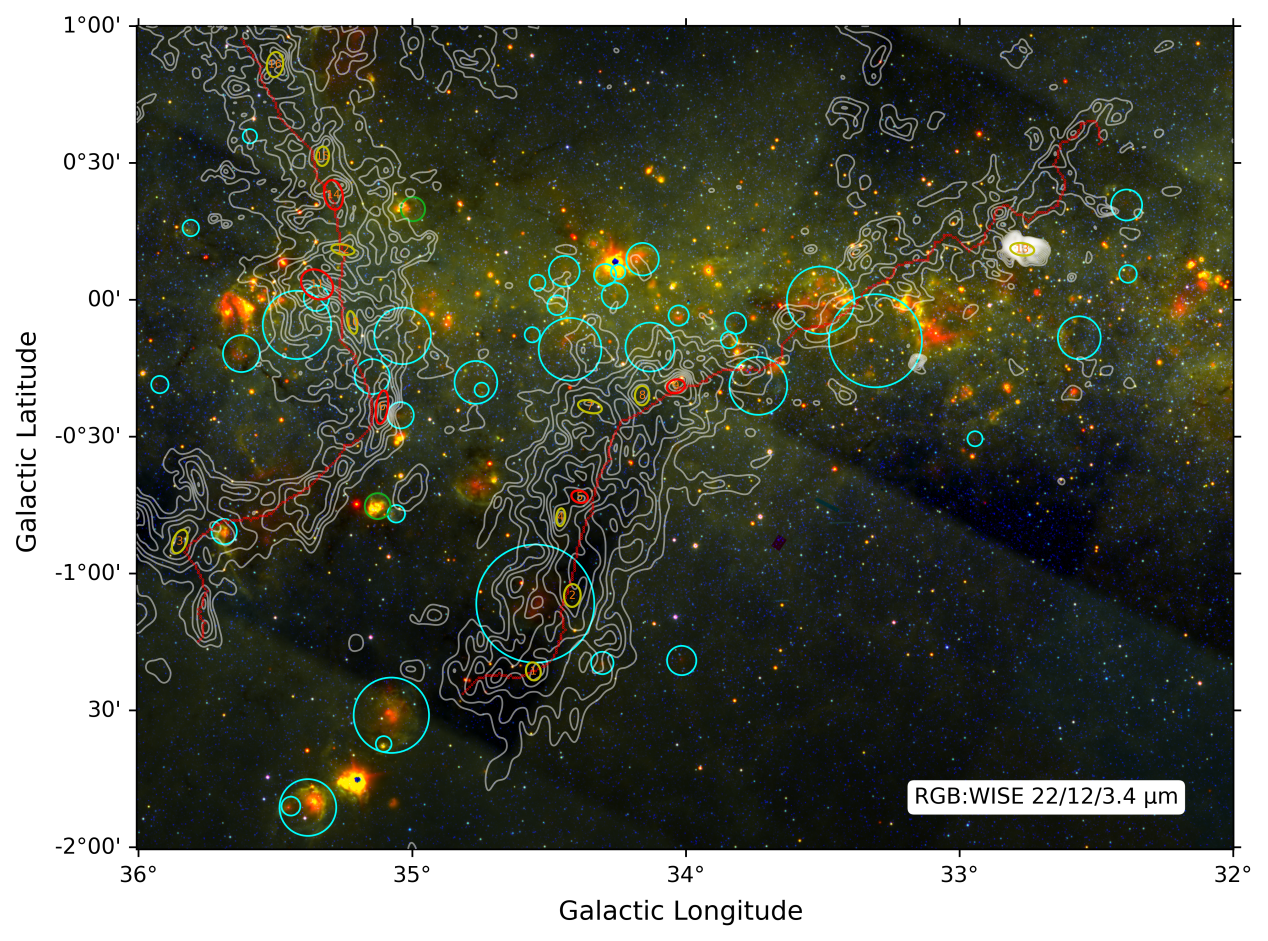

Study Provides New Evidence of Giant Filament Collisions in G34 Molecular Cloud
Using CO (J=1–0) molecular line data obtained from the 13.7 m millimeter-wave telescope at Delingha Observatory of Purple Mountain Observatory, SUN Mingke, a PhD student from the Star Formation and Evolution Group at Xinjiang Astronomical Observatory, Chinese Academy of Sciences, and his collaborators conducted a systematic study of the Galactic molecular cloud G34. The researchers revealed the collisional signatures and dynamical mechanisms of filamentary structures in this region.
The results were published in Astronomy & Astrophysics.
Star formation is one of the key processes driving the evolution of galaxies and the interstellar medium. Recent observations and theoretical studies suggest that interactions and collisions between large-scale filamentary structures may play an important role in triggering high-mass star formation. In this work, the researchers identifiedtwo giant filaments (F1 and F2) in the G34 region. By Analyzing their spatial distribution and velocity field, they found clear evidence of ongoing collisions between them.
The study shows that the fractions of high column-density gas (N(H2)>1.0×1022cm-2) within F1 and F2 are relatively low, only 4.16% and 8.33%, respectively. Across the entire region, only one dense clump is spatially associated with a WISE 22 μm infrared dust core. This suggests that F1 and F2 are still in an early evolutionary stage and are likely forming low-mass stars at present.
In addition, both the velocity and line mass of the filaments increase gradually from their ends toward the center, in an anti-correlation with the gravitational potential. This indicates that gravitational potential energy is being converted into kinetic energy, highlighting the importance of gravity in filament evolution.
Furthermore, no H II regions were found to be associated with F1 and F2, implying that these large-scale structures are not yet influenced by stellar feedback from ionized regions. Instead, their dynamics are primarily governed by self-gravity. further supporting the scenario that filament collision is a key mechanism driving the evolution of the system.
This study not only provides new observational evidence for the formation and evolution of filamentary structures but also highlights the important role of gravitationally driven processes in shaping their dynamics. The results contribute to a deeper understanding of the early evolutionary mechanisms of giant filamentary structures in the Milky Way.

Caption:G34 molecular cloud. Three-color composite image of WISE 3.4 (blue), 12(green), and 22 µm(red) bands (background). The white contours represent the integrated intensity of 13CO. The cyan and green circles indicate H II regions.
Attachment Download: